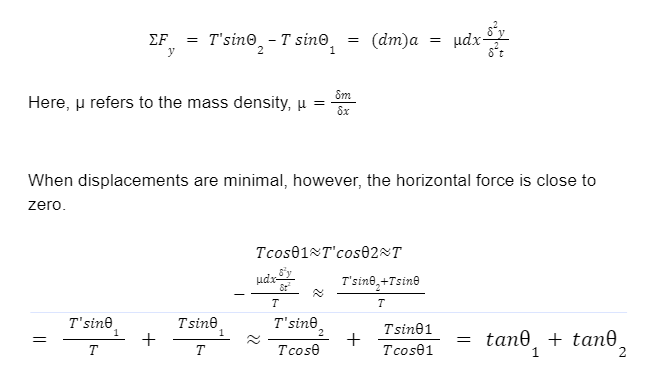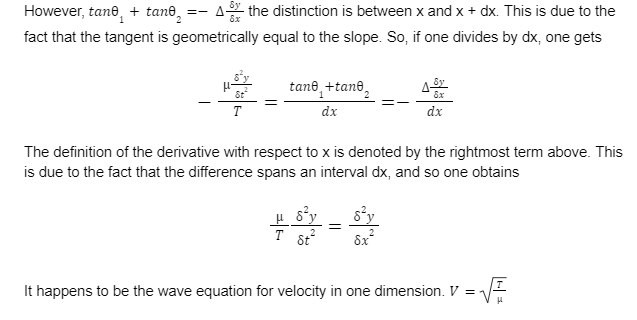Introduction
Waves are well-known to us from the ocean, sound research, earthquakes, and other natural phenomena. However, as any surfer will tell you, ocean waves, like other waves, come in a wide range of sizes. To completely comprehend waves, we must first comprehend the metrics related to them, such as how frequently they repeat (their frequency), how long they are (their wavelength), and their vertical size (amplitude).
While these data aid in the description of waves, they do not allow us to make predictions regarding wave behaviour. To do so, we need to look at waves more abstractly, which we can accomplish with the use of a mathematical formula.
What is Wave?
A wave is an energy-transporting disturbance in a medium that does not cause net particle movement. Examples include elastic deformation, pressure fluctuations, electric or magnetic intensity, electric potential, and temperature variations.
Wave motion transports energy from one location to another with little or no permanent displacement of the medium’s particles, i.e. with little or no associated mass movement. Instead, they are made up of oscillations or vibrations of the medium’s particles around almost fixed places. A wave sweeps across the region with no discernible bounds. As a result, it cannot be said to be localised in a specific location.
Wave Characteristics
Waves have the following properties:
- A wave’s particles oscillate very slightly about their mean locations, but they are not permanently displaced in the wave’s propagation direction.
- Each subsequent particle of the medium performs a motion that is exactly the same as its predecessors, whether it is parallel to or perpendicular to the wave’s line of passage.
- Only energy is exchanged during wave motion, not a portion of the medium.
Wave Function
In quantum physics, a wave function is a variable quantity that mathematically characterises the wave properties of a particle. The value of a particle’s wave function at a given place in space and time is connected to the probability of the particle being there at the moment. By similarity with sound waves, a wave function, denoted by the Greek symbol psi, can be conceived of as an expression for the amplitude of the particle wave (or de Broglie wave), albeit amplitude has no physical importance for such waves.
The square of the wave function, Ψ2, on the other hand, has physical meaning: the chance of detecting the particle described by a certain wave function at a given position and the time is directly proportional to the value of Ψ2.
Derivation of Wave Formula
The wave equation’s derivation changes depending on the circumstance. The derivation takes place in a certain basic physical context. Furthermore, this configuration is that of little oscillations on a piece of string in line with Hooke’s law.
The forces operating on a tiny element of specific mass dm confined in a small interval dx must be considered. The horizontal force is almost negligible in the event of a modest displacement. The vertical force is


Applications of Wave
Ultrasound: Ultrasounds are used to create images using harmless sound waves in both medical and industrial applications.
To investigate seismic activity: Detecting the location of oil can be difficult in the petroleum industry. Waves can be identified and used for specific purposes due to their unique properties, such as determining the interior composition of the Earth by measuring the speed of waves through it.
As a cleanser: The higher the frequency, the greater a wave’s penetration ability. Vibrating sound waves can be used to clean industrial objects such as jewellery or to clean teeth in the medical field.
Transmission: Movie images are reflected off movie screens, which transmits information. Movies can be transmitted in 3D when polarised wave images are used. GPS uses radio waves reflected from satellites.
Conclusion
A wave’s particles oscillate very slightly about their mean locations, but they are not permanently displaced in the wave’s propagation direction. Each subsequent particle of the medium performs a motion that is exactly the same as its predecessors, whether it is parallel to or perpendicular to the wave’s line of passage. Only energy is exchanged during wave motion, not a portion of the medium. A wave function is a variable quantity that mathematically characterises the wave properties of a particle. The value of a particle’s wave function at a given place in space and time is connected to the probability of the particle being there at the moment. The higher the frequency, the greater a wave’s penetration ability. Vibrating sound waves can be used to clean industrial objects such as jewellery or to clean teeth in the medical field.
 Profile
Profile Settings
Settings Refer your friends
Refer your friends Sign out
Sign out






